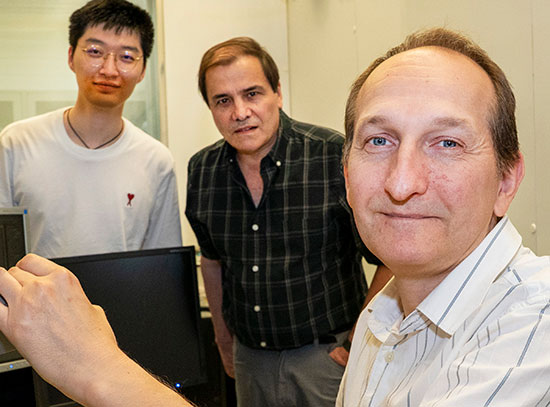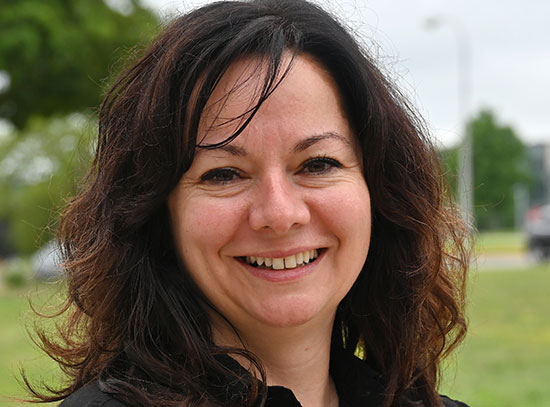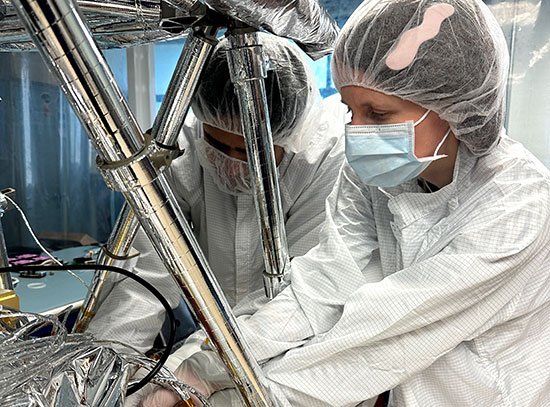Electron-Ion Collider Plans Advance — with Global Support
July 28, 2025
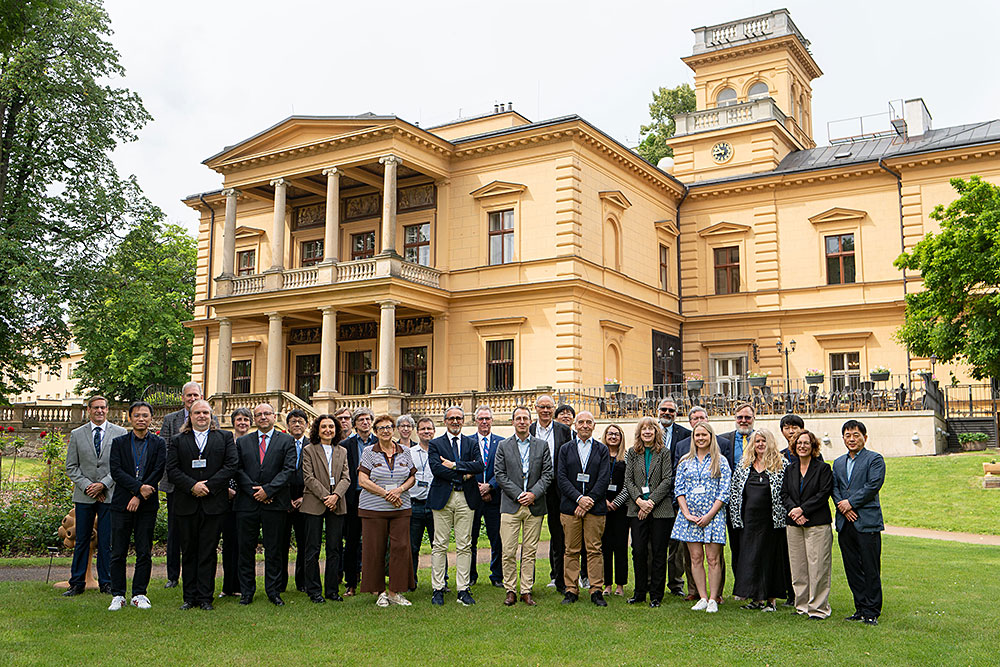 enlarge
enlarge
Group photo of the EIC Resource Review Board Meeting, held at the historic Vila Lanna in Prague, Czech Republic.
On June 5 and 6, 2025, leaders of the Electron-Ion Collider (EIC) project — a first-of-its-kind particle collider with promise to answer some of humanity’s most pressing questions about the nature of matter — advanced collaborative plans with a group of strategic international partners.
While the facility, to be built at the U.S. Department of Energy’s (DOE) Brookhaven National Laboratory in partnership with DOE’s Thomas Jefferson National Accelerator Facility, is primarily funded by DOE, global partners will be crucial to its success.
“The international community’s contributions to the project are invaluable,” said EIC Project Director Jim Yeck. “We’re extremely grateful for their continued support.”
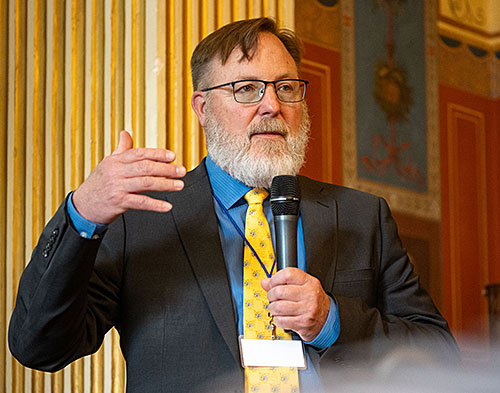 enlarge
enlarge
EIC Project Director Jim Yeck presenting at the Resource Review Board Meeting in Prague, Czech Republic.(Image courtesy of Czech Technical University in Prague, Faculty of Nuclear Sciences and Physical Engineering)
The June meeting of the project's Resource Review Board, held in Prague, Czech Republic, included representatives from Canada, Czech Republic, France, Italy, Japan, South Korea, United Kingdom, and Taiwan.
The EIC Resource Review Board mainly focuses on the development, construction, and operation, including computing, of the EIC’s house-sized particle detector. This detector, called ePIC, will capture the moments when particles collide, revealing unforeseen glimpses into the internal structure of protons and nuclei.
The Resource Review Board meetings, held every six months, provide coordination among the different international funding partners during detector development and the construction phase of the project, as well as during the experiments that will follow once the EIC becomes operational in the mid-2030s.
“Participation in the EIC is viewed as a major scientific and strategic opportunity,” said Jana Bielcikova, a professor at the Nuclear Physics Institute (NPI), Czech Academy of Sciences, and a co-organizer of the Resource Review Board meeting in Prague. “Our involvement at the EIC reinforces our country’s commitment to contributing to cutting-edge international scientific projects.”
This year’s meeting, hosted by the Czech Technical University, Nuclear Physics Institute of the Czech Academy of Sciences, and the Czech Ministry of Education, Youth, and Sports, took place at the historic Vila Lanna, a neo-Renaissance Czech Austrian heritage site.
Participation in the EIC is viewed as a major scientific and strategic opportunity.
— Jana Bielcikova, Nuclear Physics Institute, Czech Academy of Sciences
“It was an honor to co-host the Resource Review Board EIC meeting,” said Jaroslav Bielcik, a professor in the Faculty of Nuclear Sciences and Physical Engineering at Czech Technical University. “We are particularly interested in the unique science the EIC will uncover and are eager to contribute to its development.”
The EIC’s 2.4-mile-circumference complex will consist of highly sophisticated accelerator and detector components, many of them setting the bar for accelerator and detector technologies, that call on the specialized expertise of experts across the U.S. and around the world.
“Projects of the scale of the EIC are ideally suited for international collaboration,” said Bielcik. “Such cooperation facilitates the construction of the facility in an efficient manner and ensures the engagement of the global scientific community of future users. This, in turn, accelerates the production of groundbreaking scientific results.”
Three Czech institutions — Czech Technical University in Prague, Charles University, and the Nuclear Physics Institute of the Czech Academy of Sciences — are involved in the design and construction of the laser for the EIC’s electron source. They’re also working on subsystems for the EIC’s detector, including its electromagnetic and hadron calorimeters, the luminosity detector, and the silicon-based vertex detectors.
These state-of-the-art microelectronic sensors work together to track and identify remnants of particles streaming out of the collisions.
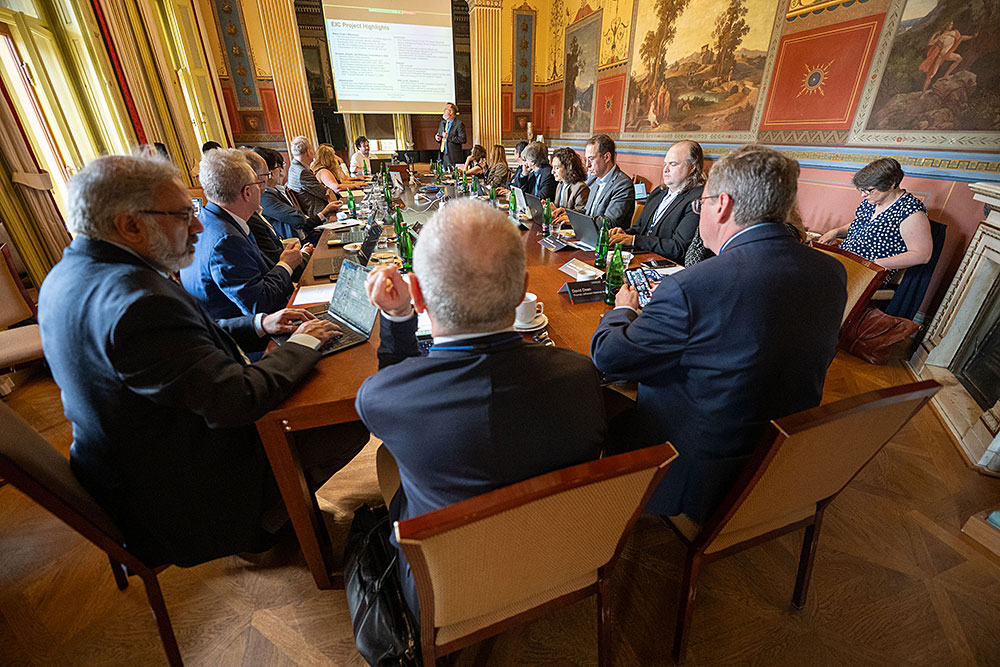 enlarge
enlarge
Members of the EIC's Resource Review Board Meeting, representing Canada, Czech Republic, France, Italy, Japan, South Korea, United Kingdom, and Taiwan, discuss plans for the Electron-Ion Collider in Prague.
The United Kingdom, Italy, France, Korea, Canada, and Japan have also identified scope for their in-kind contributions to several areas of the EIC’s detector. The project is pursuing potential contributions from India, Israel, Taiwan, and others.
“We have made huge progress with many countries on contributions to the EIC, and funding agencies are close to making their commitment to EIC clear,” said Elke Aschenauer, EIC co-associate director for the EIC’s experimental program, which oversees the design and construction of the EIC’s particle detector. “Countries are eager to sign.”
Based on the most recent Resource Review Board meeting’s progress, Aschenauer is optimistic about reaching the project’s goal of 30% of contributions to the detector coming from international partners.
Site preparation construction for the EIC is expected to begin in the fall of 2025.
Brookhaven National Laboratory is supported by the Office of Science of the U.S. Department of Energy. The Office of Science is the single largest supporter of basic research in the physical sciences in the United States and is working to address some of the most pressing challenges of our time. For more information, visit science.energy.gov.
Follow @BrookhavenLab on social media. Find us on Instagram, LinkedIn, X, and Facebook.
2025-22549 | INT/EXT | Newsroom




